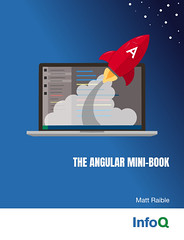I talked with some folks yesterday about joining their company as a full-time employee. Their opportunity sounds awesome: using open source tools to develop a product. The opportunity certainly appeals to me. In a sense - I could get paid to work on AppFuse. I could get paid to do the stuff I wake up early and go to bed late for. I could spend more time with my family because I'm doing my "moonlighting" stuff during the daytime.
At least that was their sales pitch.
In reality, no company in their right mind is going to pay me to work on all the open source projects I contribute to: AppFuse, Roller, Struts Resume, Struts Menu and DisplayTag. Sure, they might allow me to work on AppFuse and Roller for a few hours a week, but I can guarantee that I'll still want to contribute to the others - and hence, continue to burn the midnight oil. I've also started to think that the main reason for doing stuff "after hours" is because I spend my evenings with Julie and Abbie - whereas I used to work in the evening.
More than anything, the opportunity really got me thinking about doing full-time work vs. contract work.
I've been doing contract work for almost 3 years now - and I've only had 2 months of no work in that 3 year period. So that whole contracting is so unstable has been a myth for me. In fact, I see contracting as more stable than an employee position because I control my own destiny for the most part. NOTE: This post is likely a bit biased because my contract just got extended until the end of the year and I'm working on an AppFuse-based application. In other words, I love my job right now.
The thing I enjoy the most about contracting over full-time is freedom. I am planning to take 7 weeks off in the next few months (3 weeks for Spring Live, 4 weeks for the new baby) - and with a full-time gig, that would be impossible. I also like the ability (again, this is probably because my current client is so cool) to take a week off to attend a conference, or take a few days off to run off and do some training. The fact that I'm not tied down to one client/company is awesome. With the full-time opportunity I'm considering, I feel like I'd be marrying a woman I met just a few weeks ago. I guess most full-time gigs are like this after you've been set free with contracting.
One of the main reasons I'm considering this full-time gig is because I don't know where I want to be in 5 years. Most of my career aspirations have been met. When I started in this industry, I wanted to gain enough knowledge about what I do to speak at conferences and such. I did that last week and it was a blast - but I don't really want to do that every month - especially if I have to travel. Traveling away from my family is no fun - and happiness is more important than anything. The nice thing about the full-time gig is that its centered around a product, rather than services. Services (i.e. consulting) are great - but they're only good as long as I'm capable of working. Developing products that earn money while you're on vacation - that's the ideal situation.
The only thing I don't like about my current contract is that I'm a lone wolf. I'm the only guy developing the current app - which is great, but there's no "team spirit." My favorite job ever had awesome team spirit. This opportunity is a startup, which often leads to team spirit - but they also enticed me with ideas of working with a smart bunch of developers. If you've ever worked with smart people, you know that this is a real treat. Learning from your peers just by going into the office is quite a rush. When someone tries to find their answer on Google before asking you - it's refreshing. But is this worth giving up freedom for?
Another important consideration is compensation. Contracting tends to pay 50%-100% more than a full-time position. Of course, this full-time opportunity has options (which supposedly narrows the gap), but we all know that those rarely come to fruition. And if they do - it usually takes a couple of years. I am well aware that a cool job is waaayyy better than a good paying one, but still - getting paid well is nice.
Lastly, to throw a wrench into everything, someone sent me an e-mail last night suggesting they might (someday) be interested in paying me to do full-time AppFuse development. Heh - now that sounds like the ultimate dream job.

